|
 |
|
page: 1 | 2 | 3 | 4 | 5 | 6 | 7 | 8 | 9
|
|
|
Two days later I take the bus from El Chalten to Los Antiguos at the Chilean border 600 kms further north. Mostly on Ruta 40, a wild gravel road with strong side and head winds. The small bus is bouncing from one corner to the next and needs four new tires, because the old ones blew. The trip takes 14 hours.
|
|
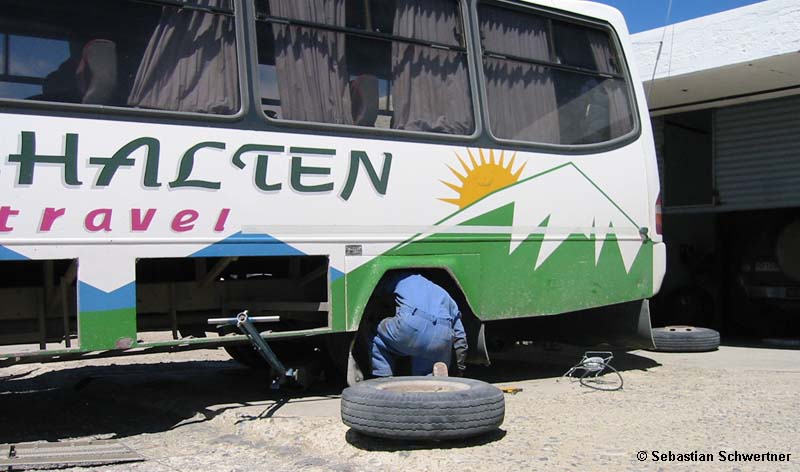 |
|
|
Changing tires on Ruta 40
|
|
|
From Los Antiguos it´s 20 km back to Chile, the first stop is Chile Chico a small quiet town on Lake General Carrera. The ferry doesn´t run on Mondays, so I have an easy day at the small harbour. An American couple with a rental car and a young puppy joins me for dinner. They have their first encounter with Patagonian winds, when a small gust blows all their gear into the next fence. I had automatically secured my stuff with stones and bags.
|
|
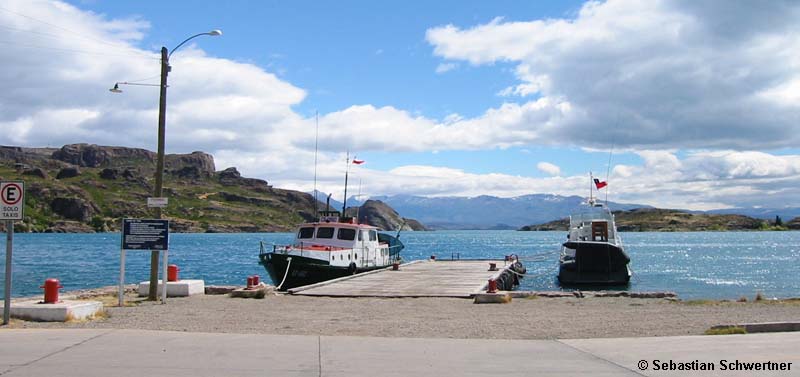 |
|
|
Port of Chile Chico
|
|
|
At sunrise I take the ferry to Puerto Ibañez and enjoy the views of the surrounding area with many lakes and wooded hills. Puerto Ibañez is a small village with no real center and one tiny shop. So I pedal on through lonely farms uphill and over the first 1.200 m high pass. Here I meet the Carretera Austral, a road that was started by Pinochet back in 1976 to develop the forested and hilly Northern Patagonia.
|
|
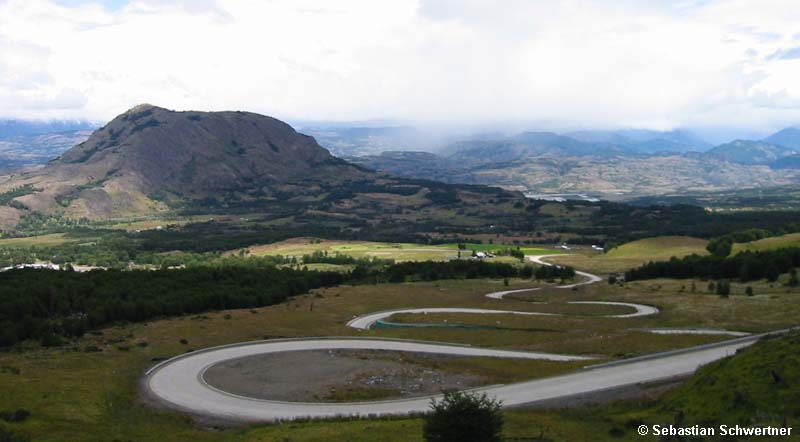 |
|
|
Carretera Austral
|
|
|
The construction was done by the Chilean army with up to 10.000 soldiers. The road is 1.150 km long and was finished ten years later. I´m on a paved road for the first time since El Calafate 10 days ago. To the left and the right of the road are nearly endless temperate rainforests. The trees are full of lichen and moss. On the ground every inch is covered by large farns, moss, huge rhubarb leaves and countless flowers. Most of them are new to me. A wild snow storm moves through and in the morning my tent is covered with frost.
|
|
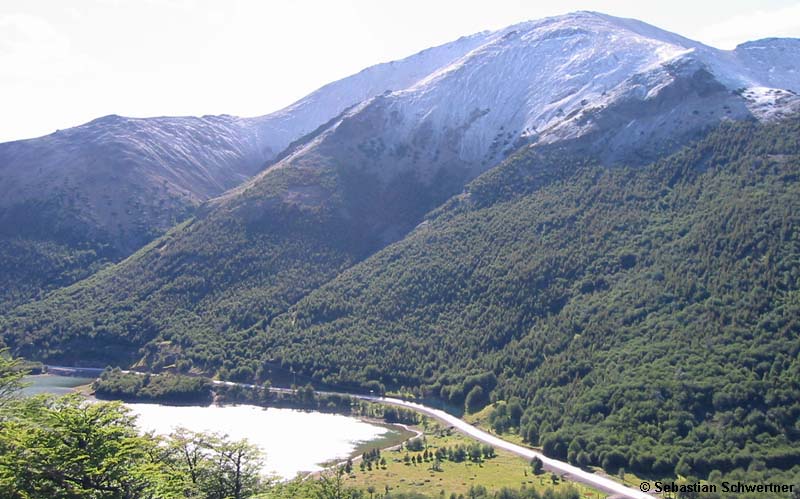 |
|
|
Carretera Austral
|
|
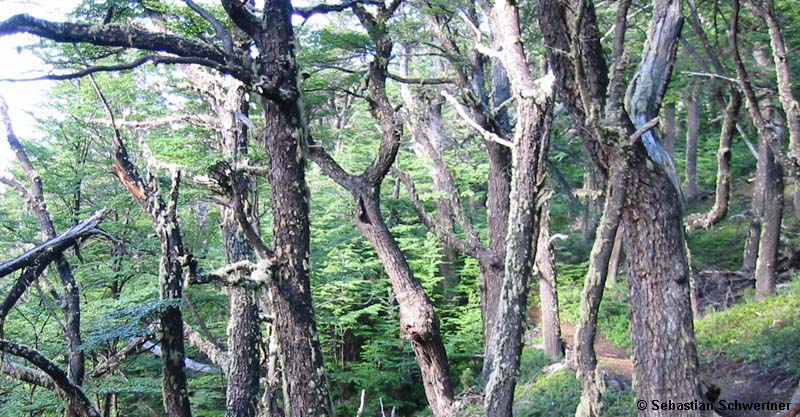 |
|
|
Temperate rain forest
|
|
|
So I pack my damp tent and follow the lonely road through a hilly landscape that could be somewhere in the Lake District. Destination Coyhaique - the biggest city in the 11th region. But big is relative here, Coyhaique has only 40.000 inhabitants and feels pleasantly laid back. Which is fine with me, because I´m having trouble with a cold since El Chalten. I wake up a couple of times at night, when the coughing wouldn´t stop. I spend the next day in bed and only leave the hostal to eat and check my emails. After two days I leave the city and follow the Carretera Austral west. Thomas must be in Santiago by now.
|
|
 |
|
|
Coyhaique
|
|
|
The next 50 kms are on new smooth tarmac through dense rain forests to the Pacific coast. The wind in Northern Patagonia is not nearly as strong as further south. That´s what cycling on the Carretera Austral should be like. At the next junction I turn right and have tailwind for the first time in two weeks. The sun is out and the temperatures are above 20°C. So I´m wearing shorts, a novelty on this trip. Here are other cyclists on the road that cycle south. Most of them Europeans. In Mañihuales is a county fair with rodeo and all hostels are full. I ask a farmer if I could pitch my tent below his cherry trees. No problema is his reply. The locals are friendly, but I have to talk first.
|
|
|
|
|
|
|
|
|
On the next day the pavement ends and the next 30 kms are on a road construction site with potholes, deep sand and many construction vehicles. I see fresh bicycles tracks ahead of me and workers tell me, a cyclist came through not long ago. I hurry up and meet with Thomas at lunch break. What a lucky encounter. We share lunch and the stories of two weeks on the road. He was stuck in Puerto Natales for five days, because all three ferries that sail between Puerto Natales and Puerto Montt couldn´t run with a variety of problems. That evening we camp in a nice meadow. The next morning starts rainy, so we have a lazy start. When the sun comes out, the forest feels like a tropical green house at 30°C. The Carretera climbs over a steep pass, which is only 500 m but we started at sea level.
|
|
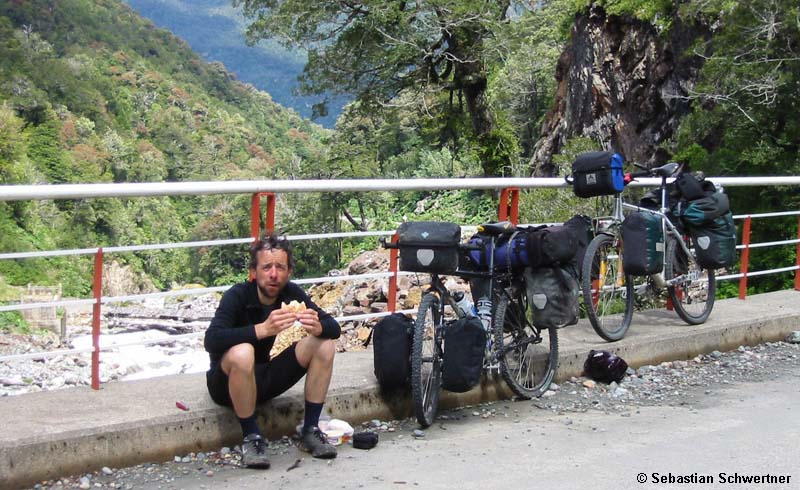 |
|
|
Lunch break
|
|
|
The surrounding hills are more than 1.500 m and covered by glaciers. Not surprising with an avarage annual temperature of 0°C and 3.500 mm percipitation. The road from the pass leads downhill to a quiet fjord with salmon farms. Chile is the world´s second biggest salmon producer after Norway. After 1.056 km I have the first flat tire and the next one just after another 10 kms. In the last light we arrive in Puyuhuapi, a small settlement founded in 1935 by German fishermen. We stay overnight in a nice cabaña.
|
|
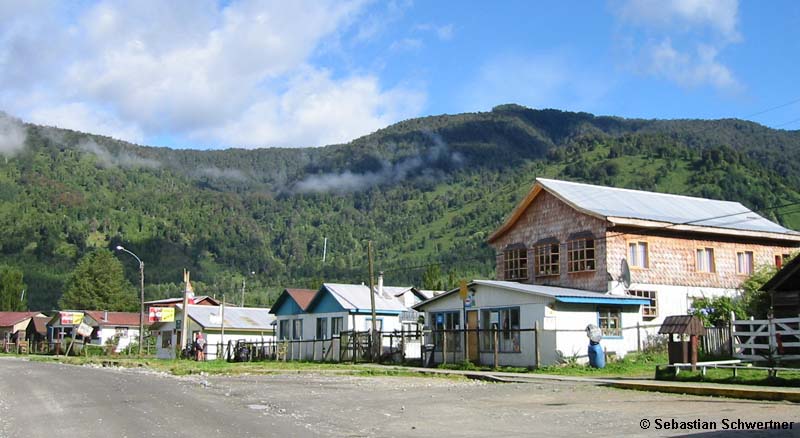 |
|
|
Puyuhuapi
|
|
|
The road takes us further north through dense rainforests and open areas where the forest was burned down 50 years ago. The black trunks of the ancient rain forest are still standing 50 m tall.
|
|
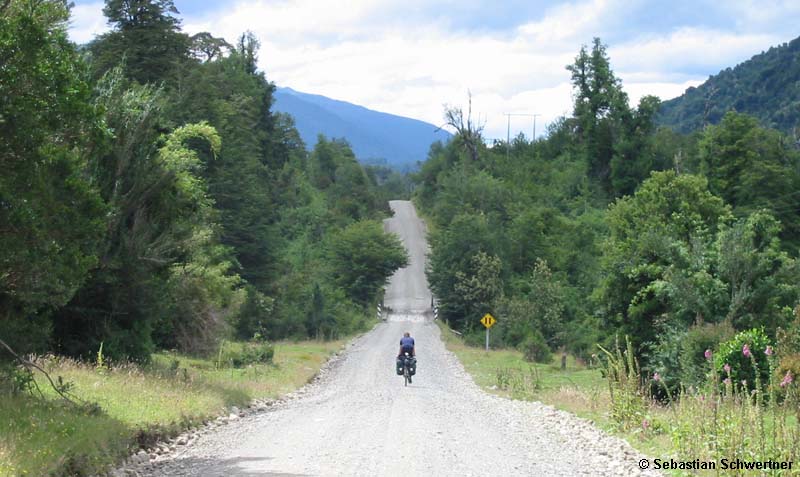 |
|
|
Carretera Austral
|
|
|
One day later the bad weather is back. It rains all day long. We get to Santa Lucia and spend the day in bed reading. The weather isn´t changing so I take the bus to Chaiten. Thomas keeps on cycling through rain, mud and wind. There is a direct ferry from Chaiten to Puerto Montt. Due to the weather and the waves the passage is delayed by four hours, but in the end we take off. The boat is a new Norwegian built 60 ft. catamaran with strong engines. My bicycle is safely tied to the life boat. The journey is pretty dramatic and out on the Pacific Ocean the waves are five meters high. Even the crew is quiet and rather pale.
|
|
|
page: 1 | 2 | 3 | 4 | 5 | 6 | 7 | 8 | 9
|
|

